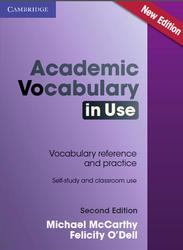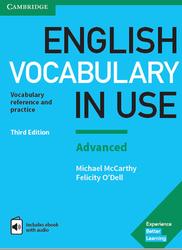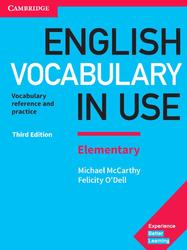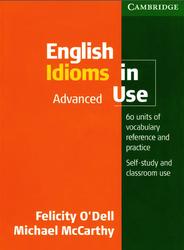It was written to help you take your knowledge of idioms to a more advanced level. The ability to use idioms accurately and appropriately is an indicator that you have a truly advanced level of English, and so this book pays attention to the productive use of idioms as well as to the comprehension of their meaning. Many of you will have already worked with English Idioms in Use Intermediate, and this book builds on the work done there. However, it does not matter if you have gained your knowledge of idioms in a different way. We do not assume that you have used English Idioms in Use Intermediate, although we do present and practise different idioms from those that were presented in the lower-level book.
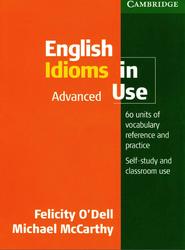
Common metaphors in idioms.
What is a metaphor?
Metaphors describe a person, object or situation by comparing it to something else with similar characteristics. They are often used in poetry and literature. In Shakespeare’s Romeo and Juliet, for example, Romeo says ‘Juliet is my sun,’ suggesting that she is the most important force in his life, bringing him light and warmth.
Many idioms are based on metaphors. However, idioms are expressions that are used so frequently and are so fixed in the language that people often do not think about the metaphors behind them. The metaphors used in idioms are therefore much less original and thought-provoking than those used in literary contexts. People say, for example, ‘The new president was / took centre stage at the meeting’ [was the most important or noticeable thing or person], without thinking of the original image of a theatre.
Contents.
Acknowledgements.
Using this book.
Learning about idioms.
In this section the units deal with key aspects of what idioms are and how you can use them.
1 What are idioms?.
2 When and how are idioms used?.
3 Using reference resources.
4 Common metaphors in idioms.
5 Using idioms accurately.
6 Playing with idioms.
7 Idioms from other varieties of English.
8 New idioms.
Types of idiom.
In this section the units deal with specific individual types of idiom.
9 Similes.
10 Binomials.
11 Proverbs.
12 Euphemisms.
13 Cliches and fixed statements.
14 Other languages.
Idioms from the topic area of.
In this section the units are organised around the aspect of life from which the idioms have originated.
15 Sailing.
16 War and conflict.
17 Transport.
18 Animals.
19 Parts of the body.
20 Games and sport.
21 Ancient myths and history.
22 Shakespeare.
23 Literature.
24 Science and technology.
Idioms to talk about.
In this section the units are organised around the topic or functional area where they are most likely to be used.
25 Films, plays and books.
26 Relationships - friends and family.
27 People - character and behaviour.
28 People - appearance.
29 Crime and punishment.
30 Work.
31 Business news.
32 Business meetings.
33 Money.
34 Society.
35 Daily life.
36 Positive feelings.
37 Negative feelings.
38 Problems.
Idioms used in.
This section focuses on some of the written contexts where idioms are frequently found.
39 Journalism.
40 Advertising.
41 Formal writing.
Idioms used in conversation.
This section focuses on ways in which idioms are typically used in spoken language.
42 Advising and warning.
43 Telling stories.
44 Responding to what people say.
45 Agreeing and disagreeing.
46 Expressing success and failure.
47 Emphasising.
Idioms using these keywords.
In this section each unit focuses on one keyword which has given rise to a particularly large number of English idioms.
48 Play and game.
49 Half.
50 Two.
51 All.
52 No.
53 Hand.
54 Heart.
55 Life and live.
56 Dead and death.
57 Mind.
58 Hard.
59 Fall.
60 Own.
Key.
List of phonemic symbols.
Index.
Бесплатно скачать электронную книгу в удобном формате, смотреть и читать:
Скачать книгу English Idioms in Use, Advanced, McCarthy M., O’Dell F., 2010 - fileskachat.com, быстрое и бесплатное скачивание.
Скачать pdf
Ниже можно купить эту книгу, если она есть в продаже, и похожие книги по лучшей цене со скидкой с доставкой по всей России.Купить книги
Скачать - pdf - Яндекс.Диск.
Дата публикации:
Хештеги: #учебник по английскому языку :: #английский язык :: #McCarthy :: #O’Dell
Смотрите также учебники, книги и учебные материалы:
Следующие учебники и книги:
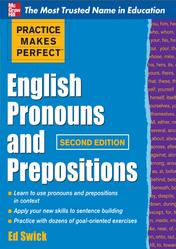 English Pronouns and Prepositions, Second Edition, Swick E., 2011 — Pronouns are almost all very small words. This fact causes some people to think that pronouns are, therefore, a small … Книги по английскому языку
English Pronouns and Prepositions, Second Edition, Swick E., 2011 — Pronouns are almost all very small words. This fact causes some people to think that pronouns are, therefore, a small … Книги по английскому языку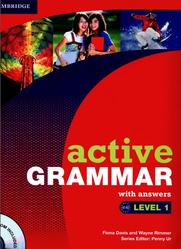 Active Grammar, With answers, Level 1, Davis F., Rimmer W., 2011 — Active Grammar is a grammar reference and practice series for secondary students and university students. It is divided into three … Книги по английскому языку
Active Grammar, With answers, Level 1, Davis F., Rimmer W., 2011 — Active Grammar is a grammar reference and practice series for secondary students and university students. It is divided into three … Книги по английскому языку Oxford Writing Tutor, 2010 — Using the Oxford Advanced Learner’s Dictionary to improve your writing. Whether you are writing a business email or a long … Книги по английскому языку
Oxford Writing Tutor, 2010 — Using the Oxford Advanced Learner’s Dictionary to improve your writing. Whether you are writing a business email or a long … Книги по английскому языку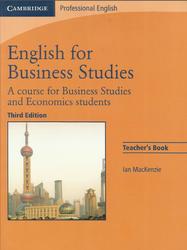 English for Business Studies, Teacher’s Book, MacKenzie I., 2010 — English for Business Studies, Teacher s Book, MacKenzie I., 2010. English for Business Studies is a course for upper-intermediate and … Книги по английскому языку
English for Business Studies, Teacher’s Book, MacKenzie I., 2010 — English for Business Studies, Teacher s Book, MacKenzie I., 2010. English for Business Studies is a course for upper-intermediate and … Книги по английскому языку
Предыдущие статьи:
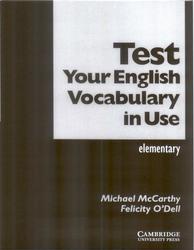 Test Your English Vocabulary in Use, McCarthy M., O’Dell F. — Test Your English Vocabulary in Use (elementary) aims to help students check their vocabulary learning. It can be used by … Книги по английскому языку
Test Your English Vocabulary in Use, McCarthy M., O’Dell F. — Test Your English Vocabulary in Use (elementary) aims to help students check their vocabulary learning. It can be used by … Книги по английскому языку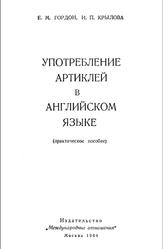 Употребление артиклей в английском языке, Гордон Е.М., Крылова И.П., 1964 — Данное пособие, как учебный материал, рассчитано для работы со студентами старших курсов языковых вузов, слушателями курсов повышения квалификации преподавателей иностранных … Книги по английскому языку
Употребление артиклей в английском языке, Гордон Е.М., Крылова И.П., 1964 — Данное пособие, как учебный материал, рассчитано для работы со студентами старших курсов языковых вузов, слушателями курсов повышения квалификации преподавателей иностранных … Книги по английскому языку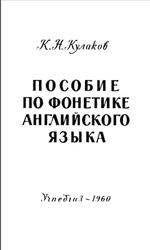 Пособие по фонетике английского языка, Кулаков К.Н., 1960 — Предлагаемое вниманию читателей пособие отнюдь не представляет собой учебника по фонетике английского языка. Автором сделана лишь скромная попытка объединить и … Книги по английскому языку
Пособие по фонетике английского языка, Кулаков К.Н., 1960 — Предлагаемое вниманию читателей пособие отнюдь не представляет собой учебника по фонетике английского языка. Автором сделана лишь скромная попытка объединить и … Книги по английскому языку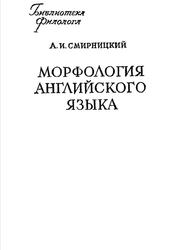 Морфология английского языка, Смирницкий А.И., 1959 — Настоящая книга является одной из частей курса современного английского языка и в качестве таковой представляет собой продолжение ранее выпущенных Издательством … Книги по английскому языку
Морфология английского языка, Смирницкий А.И., 1959 — Настоящая книга является одной из частей курса современного английского языка и в качестве таковой представляет собой продолжение ранее выпущенных Издательством … Книги по английскому языку

